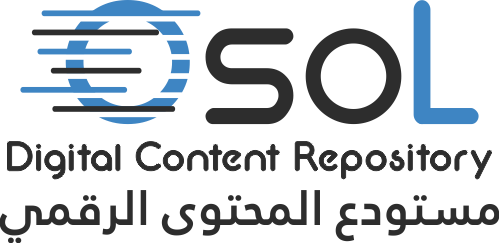Please use this identifier to cite or link to this item:
https://dspace.qou.edu/handle/194/2657| Title: | A suggested visualization for blended educational supervision in Palestinian governmental schools in the northern governorates from the point of view of principals and educational supervisors |
| Authors: | Yousef Khader Issa Rajabi يوسف خضر عيسى رجبي |
| Keywords: | Educational Supervision, Blended Educational Supervision, Palestinian Public Schools الإشراف التربوي، الإشراف التربوي المدمج، المدارس الحكومية الفلسطينية. |
| Issue Date: | 2022 |
| Publisher: | جامعة القدس المفتوحة/Al-Quds Open University |
| Abstract: | This study aimed to present a suggested visualization for blended educational supervision in Palestinian public schools in the northern governorates from the point of view of school principals and educational supervisors, considering the independent variables (gender, occupation, educational qualification, years of experience, directorate, and type of school). A random sample was selected, consisting of (584) educational supervisors and principals during the 2021/2022 academic year. Questionnaire tool was used for collecting quantitative data related to the problem of the study, which included seven areas: administrative and technical requirements, supervisory requirements, infrastructure, communication processes, degree of technological awareness, and obstacles. Whereas focus groups were used to collect qualitative data to obtain in-depth information. The results showed that the field of administration obtained a high degree, and the areas of using communication applications, digital infrastructure, competencies in the use of computer applications, supervisory competencies, follow-up and direction of management, communication with the parties to the educational process, communication security, and the availability of interaction with the parties to the educational process obtained a medium degree. The results showed that there are (13) obstacles to the integrated educational supervision, the most influential of which is the lack of cooperation between educational supervisors, school principals and teachers, the absence of technical specialists, in addition to the lack of availability of necessary equipment in schools. The results showed that there were no statistically significant differences in the average responses of the study sample members at the significance level (α ≤ .05) regarding all areas of blended educational supervision; it is attributed to the variables of gender, occupation, and type of school. While the results showed that there were statistically significant differences in the average responses of the study sample members at the significance level (α ≤ .05) regarding all areas of blended educational supervision; it is due to the variables of academic qualification, years of experience, and directorate. The study was able to present a suggested model for the blended educational supervision. The study recommended officials in the Ministry of Education to adopt the presented model and apply it in Palestinian public schools. |
| URI: | https://dspace.qou.edu/handle/194/2657 |
| Appears in Collections: | Educational Administration and Supervision - ماجستير الإدارة والإشراف التربوي |
Files in This Item:
| File | Description | Size | Format | |
|---|---|---|---|---|
| Yousef_Rajabi.pdf | 5.5 MB | Adobe PDF | View/Open |
Items in DSpace are protected by copyright, with all rights reserved, unless otherwise indicated.
